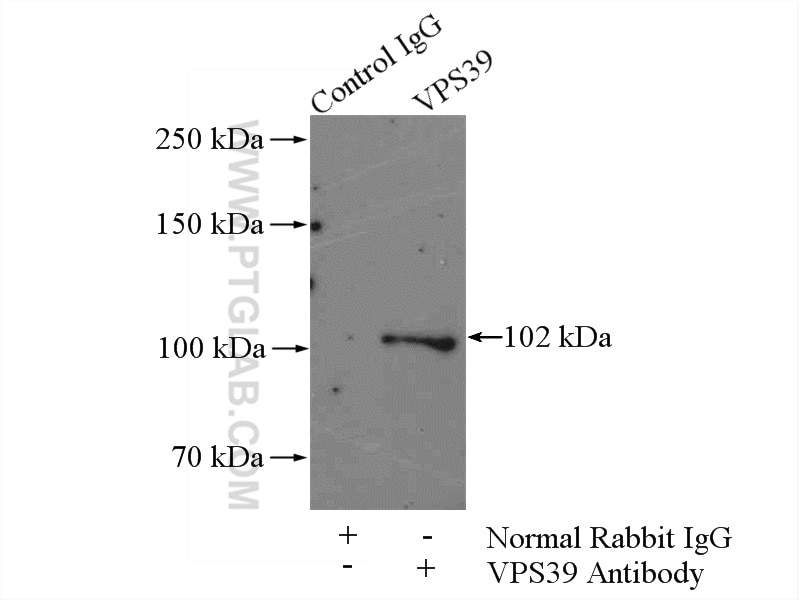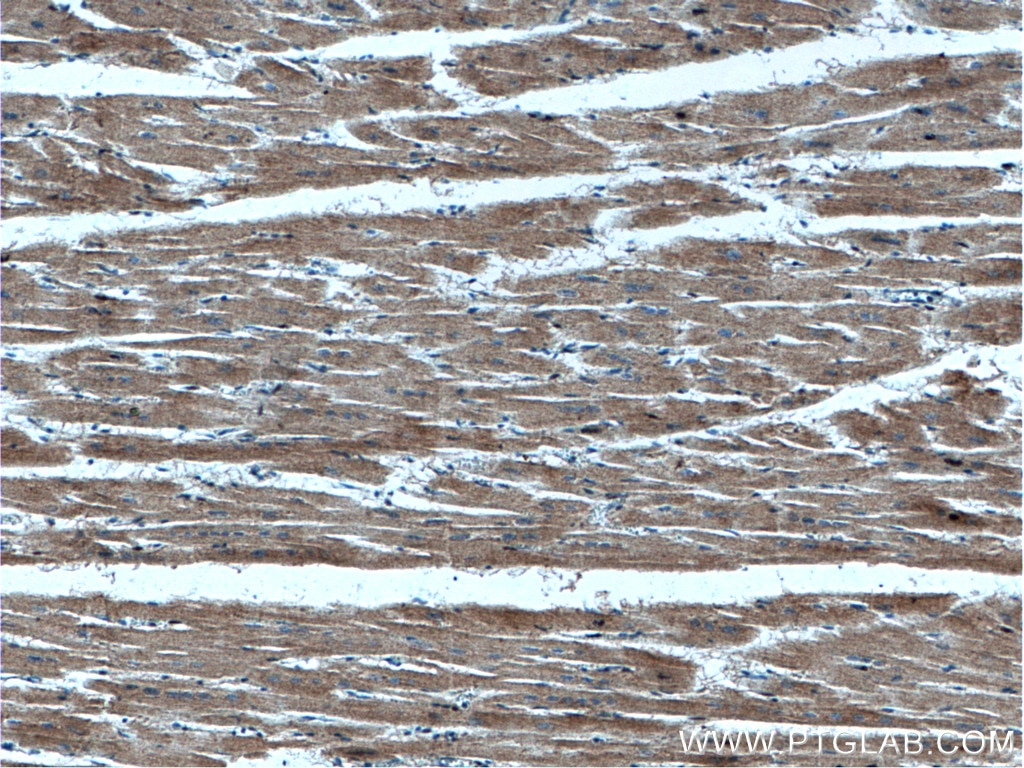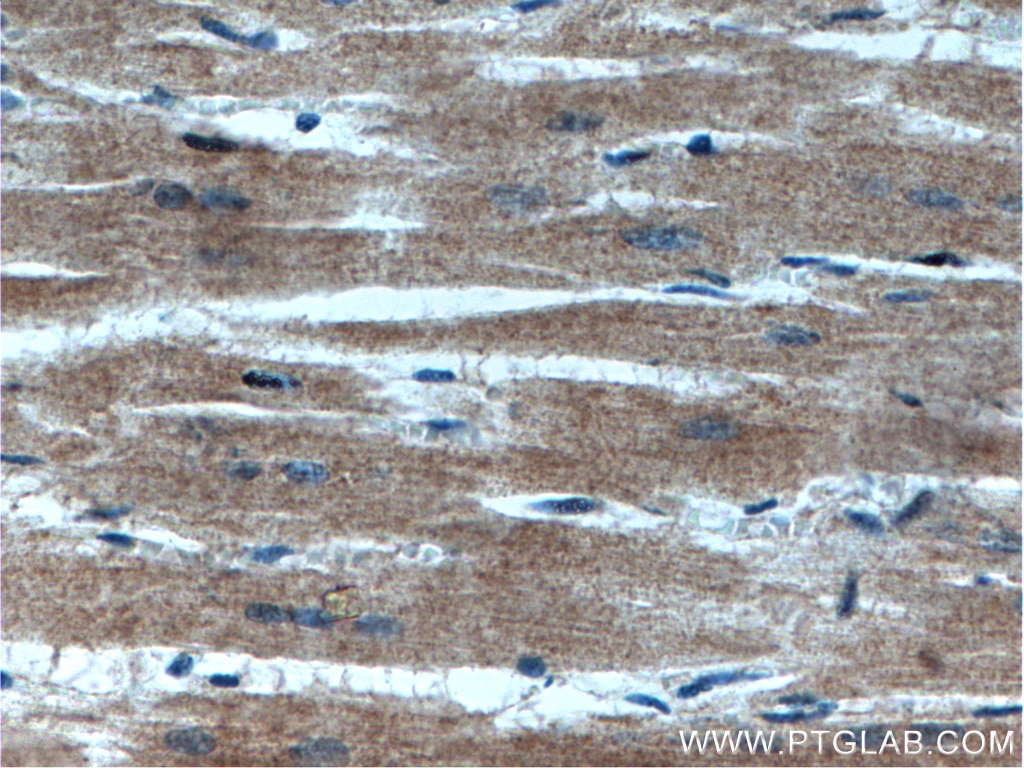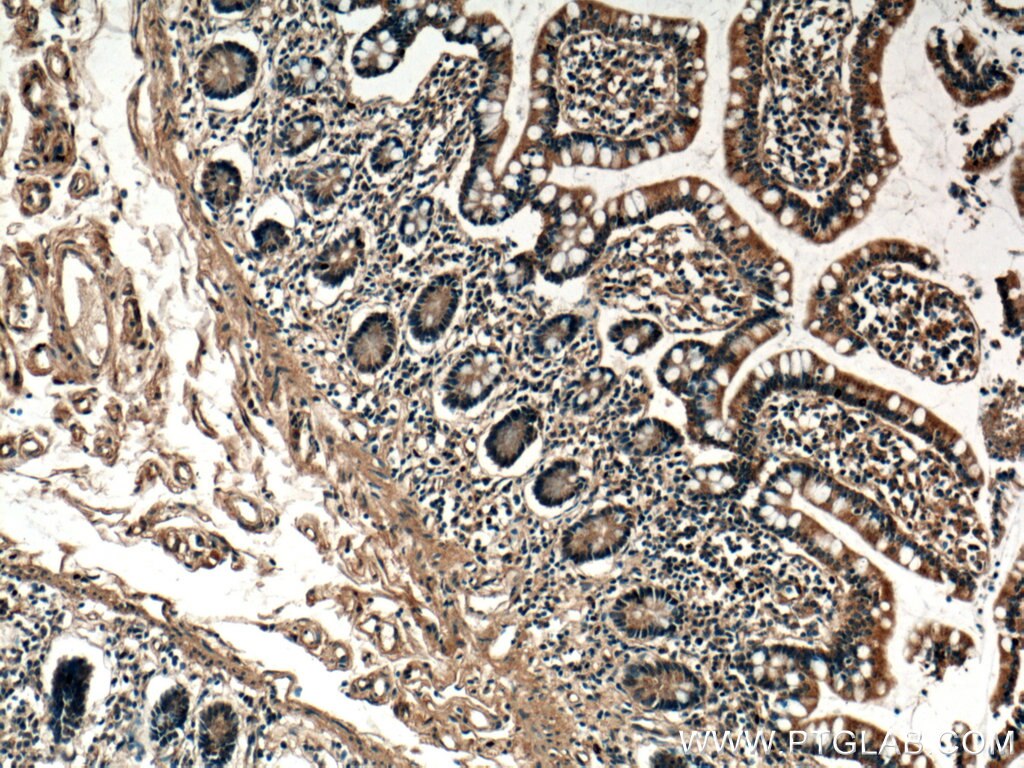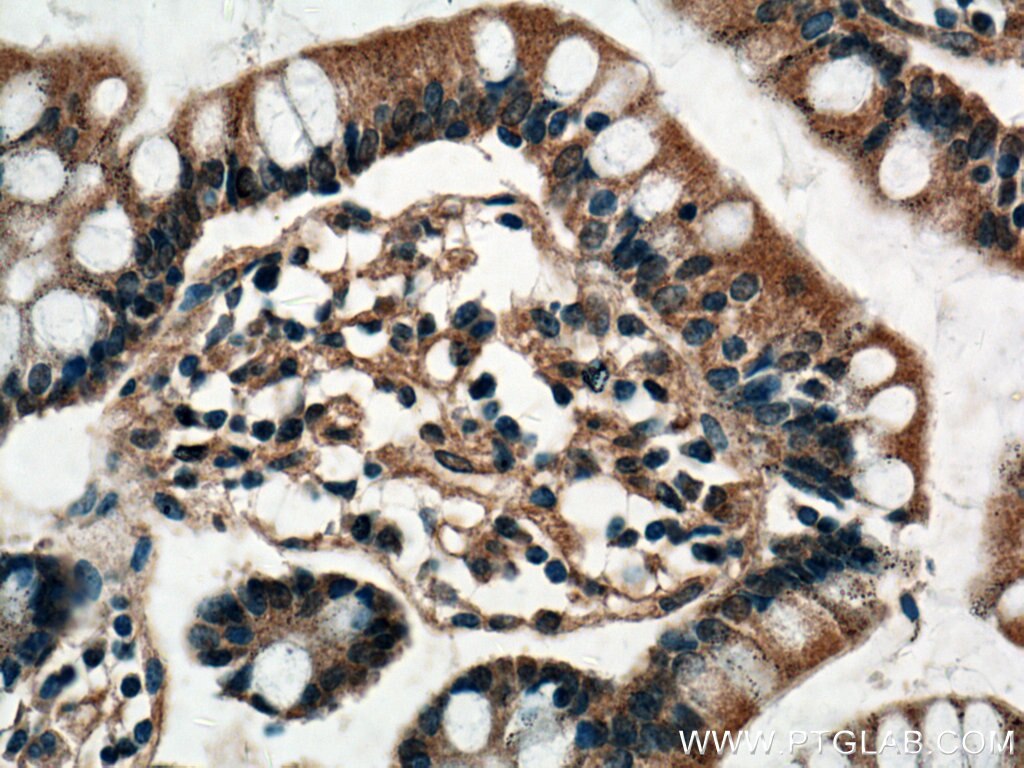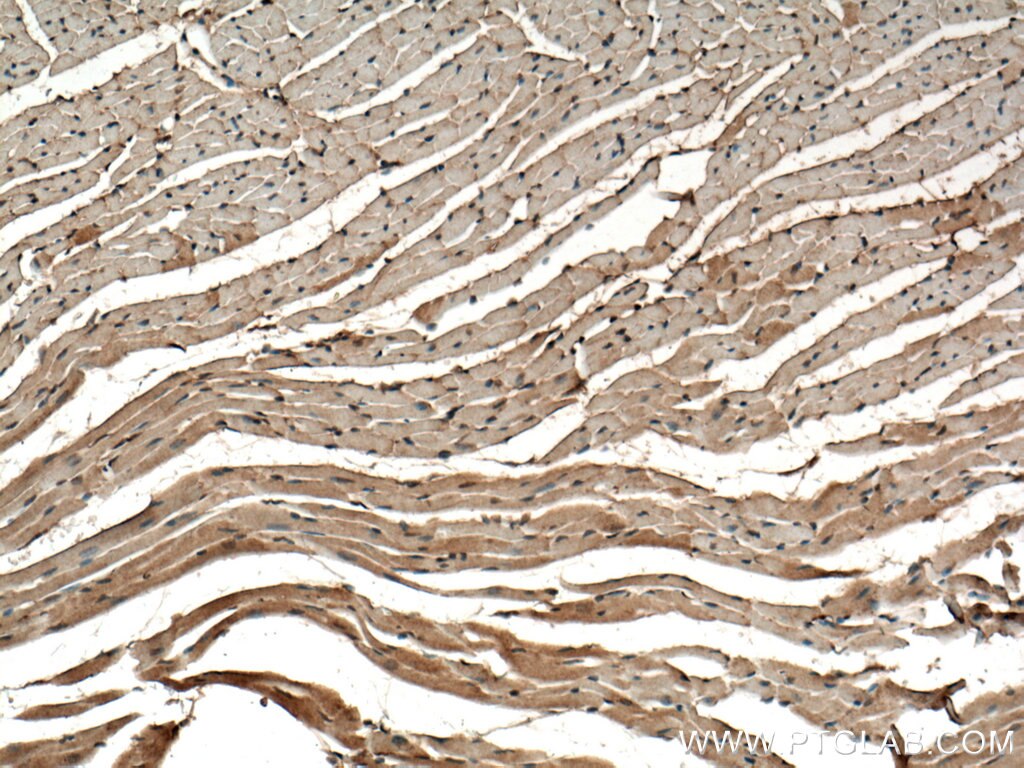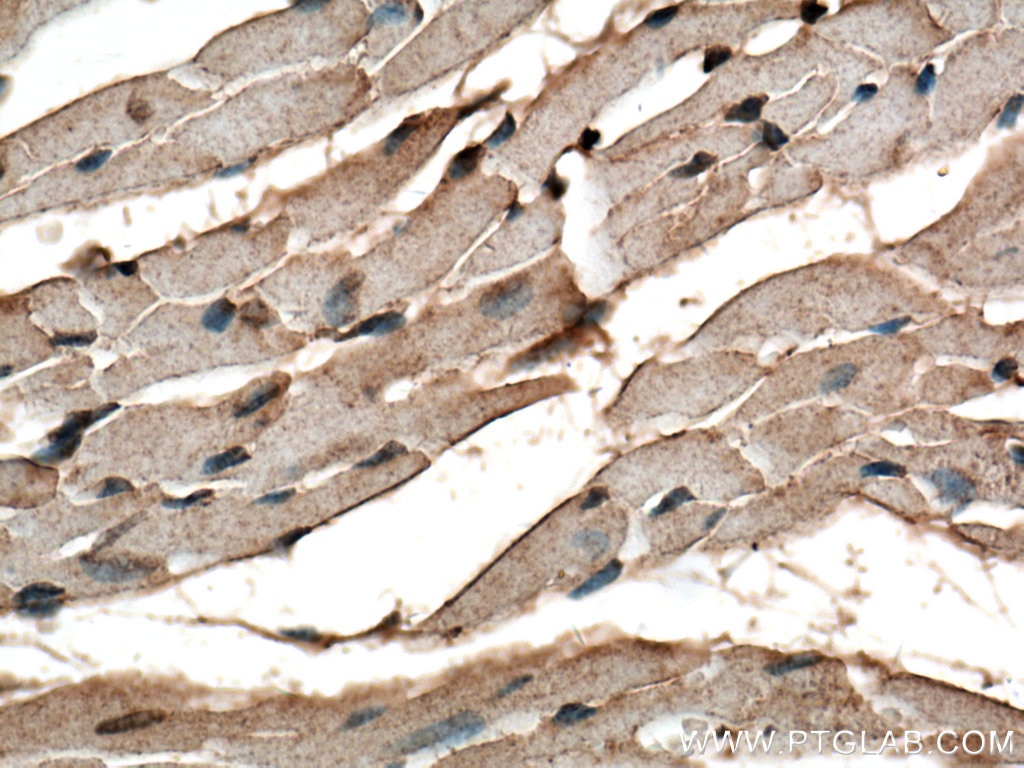- Featured Product
- KD/KO Validated
VPS39 Polyklonaler Antikörper
VPS39 Polyklonal Antikörper für IP, IHC, ELISA
Wirt / Isotyp
Kaninchen / IgG
Getestete Reaktivität
human, Maus
Anwendung
IHC, IF, IP, ELISA
Konjugation
Unkonjugiert
Kat-Nr. : 16219-1-AP
Synonyme
Geprüfte Anwendungen
| Erfolgreiche IP | Maushirngewebe |
| Erfolgreiche Detektion in IHC | humanes Herzgewebe, humanes Dünndarmgewebe, Mausherzgewebe Hinweis: Antigendemaskierung mit TE-Puffer pH 9,0 empfohlen. (*) Wahlweise kann die Antigendemaskierung auch mit Citratpuffer pH 6,0 erfolgen. |
Empfohlene Verdünnung
| Anwendung | Verdünnung |
|---|---|
| Immunpräzipitation (IP) | IP : 0.5-4.0 ug for 1.0-3.0 mg of total protein lysate |
| Immunhistochemie (IHC) | IHC : 1:50-1:500 |
| It is recommended that this reagent should be titrated in each testing system to obtain optimal results. | |
| Sample-dependent, check data in validation data gallery | |
Veröffentlichte Anwendungen
| KD/KO | See 1 publications below |
| IF | See 4 publications below |
| IP | See 2 publications below |
Produktinformation
16219-1-AP bindet in IHC, IF, IP, ELISA VPS39 und zeigt Reaktivität mit human, Maus
| Getestete Reaktivität | human, Maus |
| In Publikationen genannte Reaktivität | human, Maus |
| Wirt / Isotyp | Kaninchen / IgG |
| Klonalität | Polyklonal |
| Typ | Antikörper |
| Immunogen | VPS39 fusion protein Ag9267 |
| Vollständiger Name | vacuolar protein sorting 39 homolog (S. cerevisiae) |
| Berechnetes Molekulargewicht | 886 aa, 102 kDa |
| Beobachtetes Molekulargewicht | 102 kDa |
| GenBank-Zugangsnummer | BC015817 |
| Gene symbol | VPS39 |
| Gene ID (NCBI) | 23339 |
| Konjugation | Unkonjugiert |
| Form | Liquid |
| Reinigungsmethode | Antigen-Affinitätsreinigung |
| Lagerungspuffer | PBS with 0.02% sodium azide and 50% glycerol |
| Lagerungsbedingungen | Bei -20°C lagern. Nach dem Versand ein Jahr lang stabil Aliquotieren ist bei -20oC Lagerung nicht notwendig. 20ul Größen enthalten 0,1% BSA. |
Hintergrundinformationen
VPS39, also named as KIAA0770, TLP, or VAM6, is a 886 amino acid protein, which contains one CNH domain and one CHCR repeat. VPS39 belongs to the VAM6/VPS39 family and localizes in the cytoplasm. VPS39 is widely expressed, with highest levels in heart, skeletal muscle, kidney, pancreas, brain, placenta and spleen. VPS39 may play a role in clustering and fusion of late endosomes and lysosomes. VPS39 modulates the transforming growth factor-beta response by coupling the transforming growth factor-beta receptor complex to the Smad pathway.
Protokolle
| PRODUKTSPEZIFISCHE PROTOKOLLE | |
|---|---|
| IHC protocol for VPS39 antibody 16219-1-AP | Protokoll herunterladenl |
| IP protocol for VPS39 antibody 16219-1-AP | Protokoll herunterladen |
| STANDARD-PROTOKOLLE | |
|---|---|
| Klicken Sie hier, um unsere Standardprotokolle anzuzeigen |
Publikationen
| Species | Application | Title |
|---|---|---|
Nat Commun C9orf72-catalyzed GTP loading of Rab39A enables HOPS-mediated membrane tethering and fusion in mammalian autophagy | ||
Cell Host Microbe Global mapping of Salmonella enterica-host protein-protein interactions during infection. | ||
Autophagy SDC1-dependent TGM2 determines radiosensitivity in glioblastoma by coordinating EPG5-mediated fusion of autophagosomes with lysosomes | ||
Autophagy Atractylenolide I inhibits angiogenesis and reverses sunitinib resistance in clear cell renal cell carcinoma through ATP6V0D2-mediated autophagic degradation of EPAS1/HIF2α | ||
Dev Cell ORF3a of SARS-CoV-2 promotes lysosomal exocytosis-mediated viral egress
| ||
Curr Biol Cellular mechanotransduction relies on tension-induced and chaperone-assisted autophagy. |
